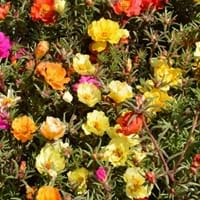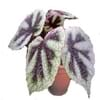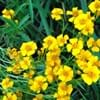Type
Flowering Plants
Grass
Origin
South America
Hybrid origin, Europe
Types
Not available
Not Available
Habitat
gardens, Roadsides, Waste areas
Farms
USDA Hardiness Zone
5-11
Not Available
AHS Heat Zone
12 - 1
10 - 1
Sunset Zone
A1, A2, A3, H1, H2, 1a, 1b, 2a, 2b, 3a, 3b, 4, 5, 6, 7, 8, 9, 10, 11, 12, 13, 14, 15, 16, 17, 18, 19, 20, 21, 22, 23, 24
1a, 1b, 2a, 2b, 3a, 3b, 4, 5, 6, 7, 8, 9, 14, 15, 16, 17, 18, 19, 20, 21, 22, 23, 24
Habit
Prostrate/Trailing
Clump-Forming
Flower Color
Red
Green, Light Green
Flower Color Modifier
Bicolor
Bicolor
Fruit Color
Not Available
Not Available
Leaf Color in Spring
Green
Light Green, Gray Green
Leaf Color in Summer
Green
Light Green
Leaf Color in Fall
Green
Light Green, Yellow green, Gold
Leaf Color in Winter
Light Green
Not Available
Leaf Shape
Needle like
Linear
Plant Season
Summer, Fall
Not Available
Sunlight
Full Sun
Full Sun
Growth Rate
Very Fast
Fast
Type of Soil
Loam, Sand
Loam
The pH of Soil
Neutral, Alkaline
Neutral
Soil Drainage
Well drained
Well drained
Bloom Time
Indeterminate
Late Spring, Early Summer
Tolerances
Drought, Heat Tolerance
Not Available
Where to Plant?
Container, Ground, Pot
Ground
How to Plant?
Seedlings
Seedlings
Plant Maintenance
Low
Medium
Watering Requirements
Average Water Needs
Requires a lot of watering, Requires watering in the growing season
In Summer
Lots of watering
Lots of watering
In Spring
Moderate
Moderate
In Winter
Average Water
Average Water
Soil pH
Acidic, Neutral, Slightly Acidic
Neutral
Soil Type
Well drained
Loam
Soil Drainage Capacity
Well drained
Well drained
Sun Exposure
Full Sun
Full Sun
Pruning
Remove damaged leaves, Remove dead branches, Remove dead leaves, Shearing
Remove damaged leaves, Remove dead branches, Remove dead leaves
Fertilizers
Requires high amount of nitrogen
All-Purpose Liquid Fertilizer
Pests and Diseases
Aphids, Botrytis Blight, Brown Spots, Gray mold, Root rot, Stem rot
Red blotch
Plant Tolerance
Drought, Heat Tolerance
Drought
Flowers
Showy
Insignificant
Flower Petal Number
Semi-Double
Single
Foliage Texture
Fine
Fine
Foliage Sheen
Matte
Glossy
Attracts
Butterflies
Not Available
Allergy
Not Available
no allergic reactions
Aesthetic Uses
Beautification, Bouquets, Cottage Garden, Ground Cover, Showy Purposes
Not Used For Aesthetic Purpose
Beauty Benefits
Skin Problems
Not Available
Environmental Uses
Air purification
Air purification
Medicinal Uses
Depurative, Insect Bites, Liver problems, Snakebite, Swelling
Menstrual Disorders, osteoporosis, Urinary tract problems
Part of Plant Used
Flowers, Leaves, Stem, Whole plant
Whole plant
Other Uses
Showy Purposes, Used As Food, Used for its medicinal properties
Culinary use, Used for pasture
Used As Indoor Plant
No
No
Used As Outdoor Plant
Yes
Yes
Garden Design
Cottage garden, Edible
Edible
Botanical Name
PORTULACA grandiflora
AVENA sativa
Common Name
Moss Rose, Portulaca, Sundial Scarlet Portulaca
Oat
In German
Portulak
Haferpflanze
In French
portulaca
Plantes d'avoine
In Spanish
Portulaca
planta de avena
In Greek
Portulaca
φυτό βρώμη
In Portuguese
Portulaca
aveia planta
In Polish
Portulaca
Owies roślin
In Latin
Portulaca
Oat plant
Phylum
Magnoliophyta
Tracheophyta
Class
Magnoliopsida
Liliopsida
Order
Caryophyllales
Poales
Family
Portulacaceae
Poaceae
Clade
Angiosperms, Core eudicots, Eudicots
Angiosperms, Commelinids, Monocots
Tribe
Not Available
Aveneae
Subfamily
Not Available
Pooideae
Number of Species
Not Available
Season and Care of Portulaca and Oat plant
Season and care of Portulaca and Oat plant is important to know. While considering everything about Portulaca and Oat plant Care, growing season is an essential factor. Portulaca season is Summer and Fall and Oat plant season is Summer and Fall. The type of soil for Portulaca is Loam, Sand and for Oat plant is Loam while the PH of soil for Portulaca is Neutral, Alkaline and for Oat plant is Neutral.
Portulaca and Oat plant Physical Information
Portulaca and Oat plant physical information is very important for comparison. Portulaca height is 10.20 cm and width 20.30 cm whereas Oat plant height is 60.00 cm and width 10.20 cm. The color specification of Portulaca and Oat plant are as follows:
Portulaca flower color: Red
Portulaca leaf color: Green
Oat plant flower color: Green, Light Green
- Oat plant leaf color: Light Green and Gray Green
Care of Portulaca and Oat plant
Care of Portulaca and Oat plant include pruning, fertilizers, watering etc. Portulaca pruning is done Remove damaged leaves, Remove dead branches, Remove dead leaves and Shearing and Oat plant pruning is done Remove damaged leaves, Remove dead branches and Remove dead leaves. In summer Portulaca needs Lots of watering and in winter, it needs Average Water. Whereas, in summer Oat plant needs Lots of watering and in winter, it needs Average Water.





